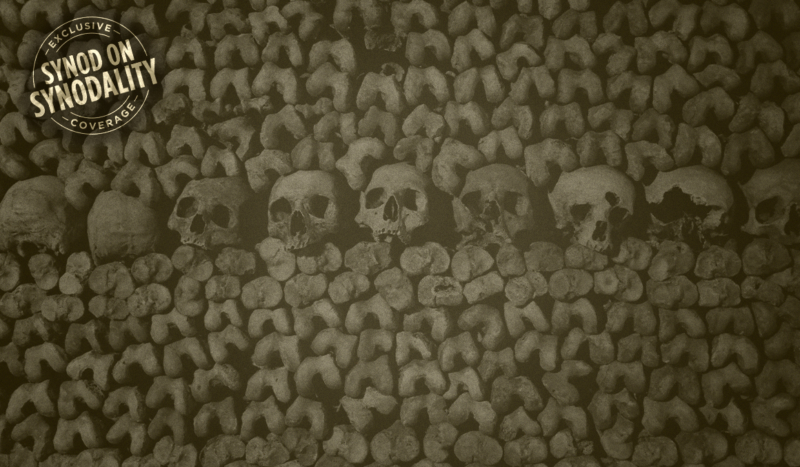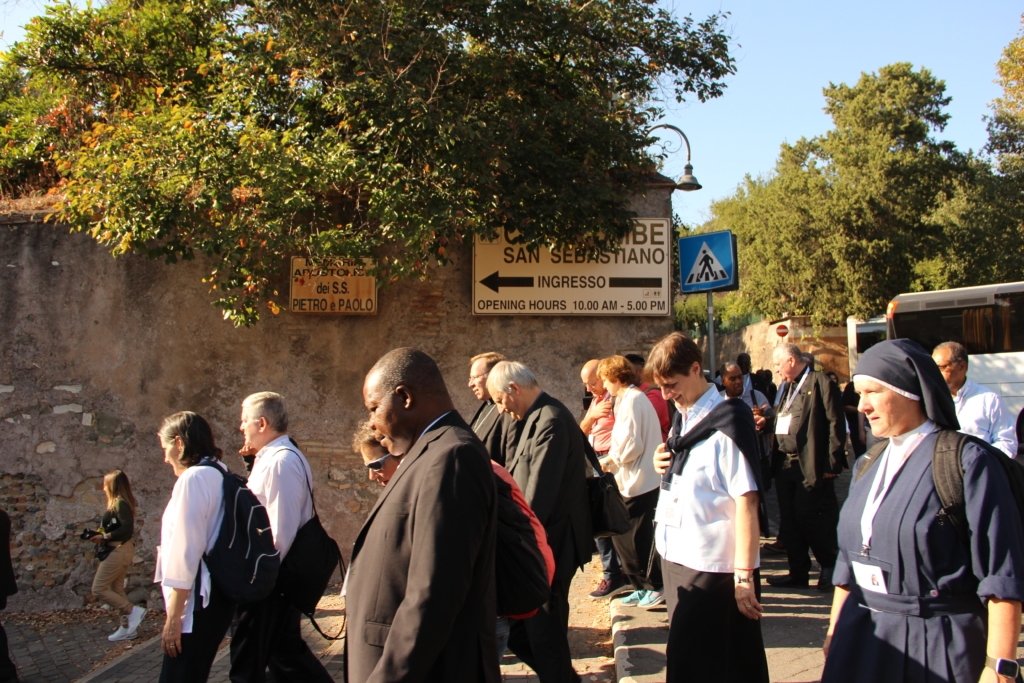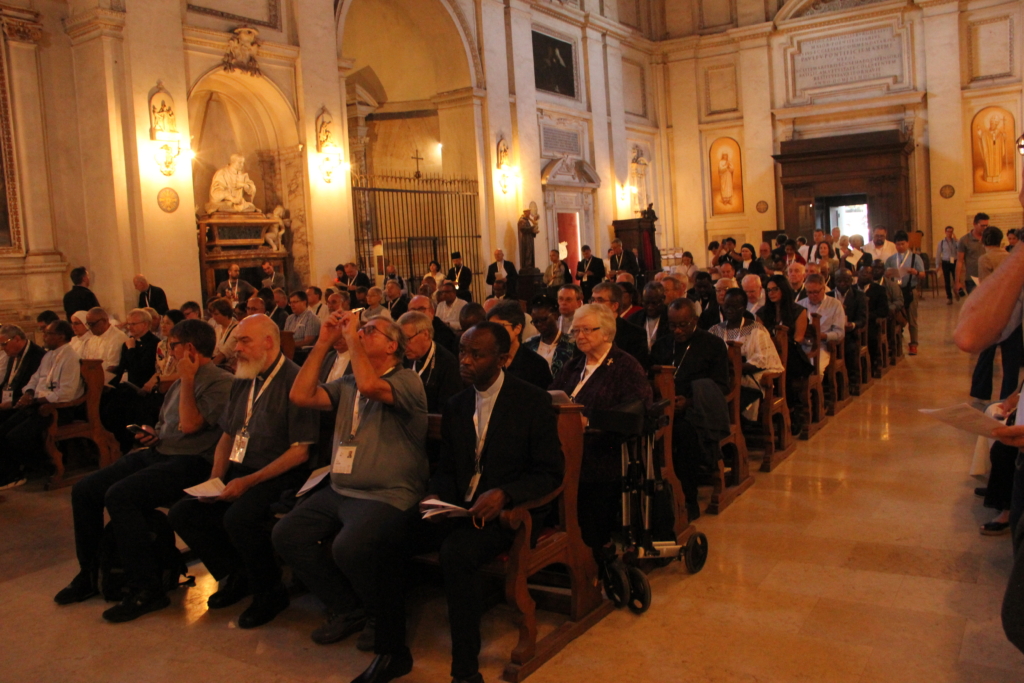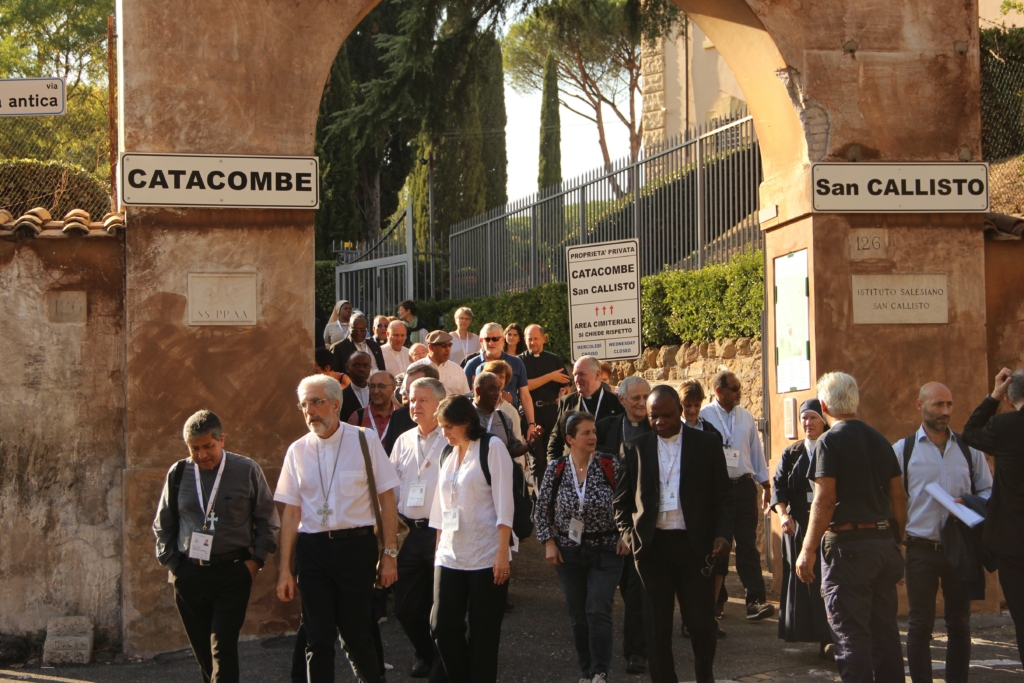
A priest holds a rosary behind his back, silently praying where the early Christians once celebrated mass; hands reaching out to touch age-old rocks where martyrs were once laid to rest; ancient symbols of Christianity carved into the walls from a time when Christianity was young.
These images marked the Synod on Synodality’s pilgrimage through the catacombs on October 12.
The pilgrimage began in a basilica built upon St. Sebastian’s burial place, where participants joined in prayerfully chanting the Adsumus Sancte Spiritus. The prayer, which hearkens back to the Second Vatican Council, means “We stand before You, Holy Spirit.”


A marble statue of Saint Sebastian rests in a side altar, pierced by three golden arrows. Votive candles echo the whispered prayers of past pilgrims. An intricate and colorful ceiling depicts the scene of Saint Sebastian’s martyrdom in a three dimensional relief.
“According to tradition, in the 3rd century, in this place the remains of the Apostles Peter and Paul were kept to save them during persecution: the church is founded on the faith of the apostles,” Cardinal Jean-Claude Hollerich said in the invitation of the service. “For the faith the martyrs gave their lives, in the same faith we too live the synodal path to proclaim the Gospel of Jesus today.”
“At the beginning of our pilgrimage we recall the synodal path we are living. The places we will encounter on our journey remind us of the radical nature of following the Lord and strengthen our communion with those ‘who have gone before us marked with the sign of faith,’ up to the gift of life.”
The group of more than 300 pilgrims then sang the Confitemini Domino, quoniam bonus, “O give thanks unto the Lord,” before processing on from the sunny October day to a cool descent into the catacombs.
The walls of the catacombs are lined with symbols and frescos left by the early Christians. According to the guide, the letters of the Greek word for fish, Ikthys, formed an acronym that subtly communicated the key teaching of Christianity: “Jesus Christ, Son of God, Savior,” while figures with hands raised in prayer, in the orans position, signified that they were in heaven with God.
Early Christians would also depict the crucifixion with an image of the sacrifice of Isaac, likely because Romans were still crucifying people at that point, the guide explained.
Though the shelf-like tombs were once full, the remains were gradually moved into a more secure area of the catacombs to prevent visitors from taking relics, or souvenirs, home with them. The graves themselves form a strange texture as they were carved into solidified volcanic rock known as tuff, with bits of reddish, crumbling rock lining the narrow pathway.
A marble sculpture of St. Cecilia, with her head covered in a burial cloth and twisted away, serves as a jarring yet peaceful reminder of the sacrifices the martyrs made. Nearby, a fresco of the face of Christ and an orans figure painted on the rock wall have crumbled in some places—but Christ’s stare is still piercing.

